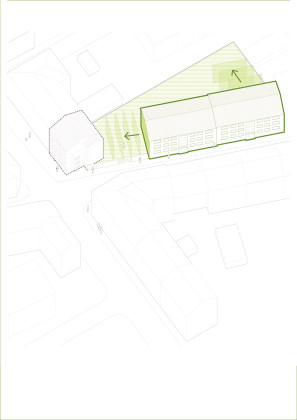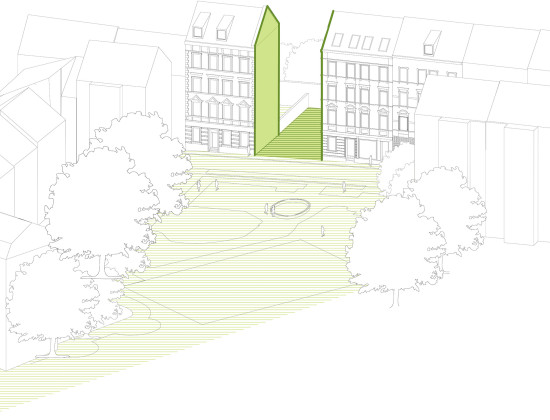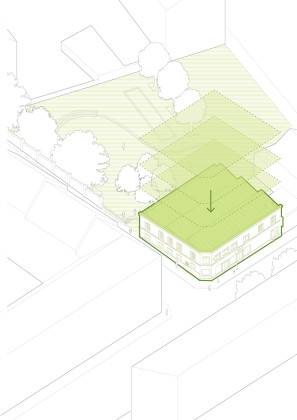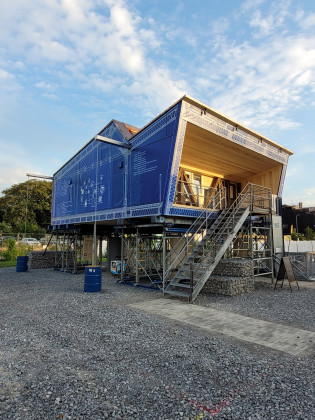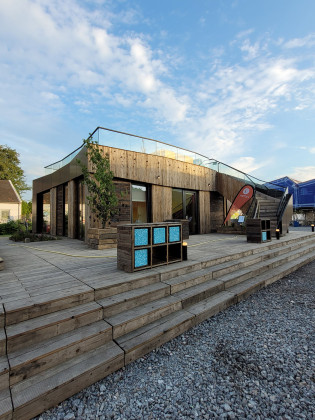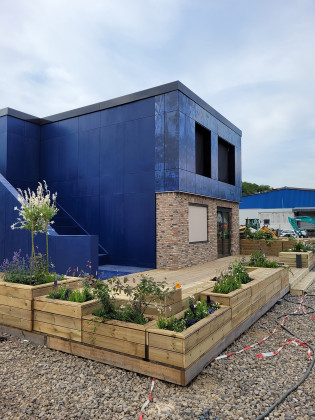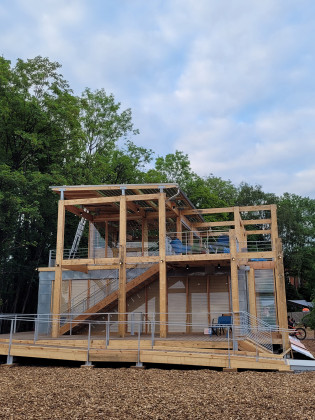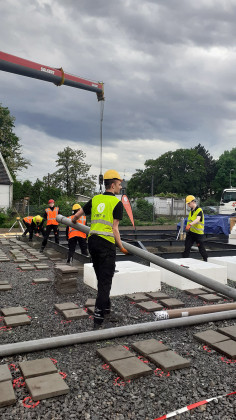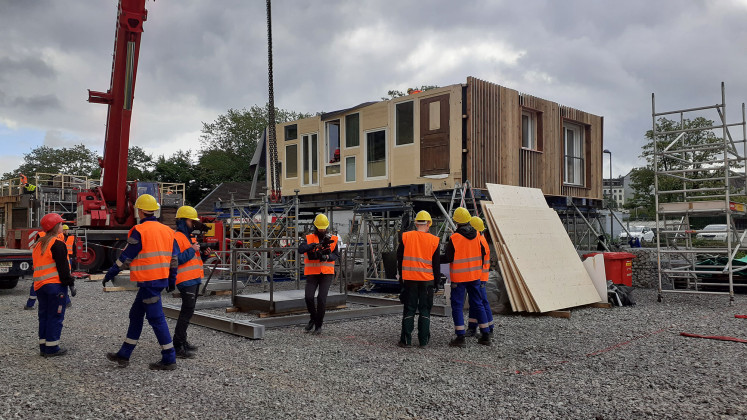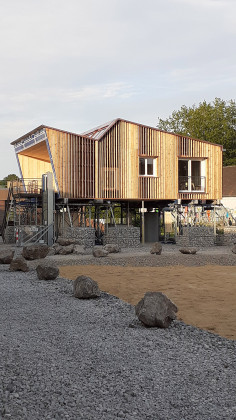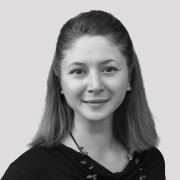A Sustainable City Is Possible! Only If We Work Together… Solar Decathlon Europe 21/22
Işıl Kalpkırmaz Rızaoğlu wrote about Solar Decathlon Europe 21/22, where students came together to compete for a more livable future.
How we live today determines how we will live in the near future. If we want to limit the temperature increase by actually 1,5°C above pre-industrial levels this century by reducing greenhouse gas emissions, as decided in the Paris Agreement in 2015, on the way to combat climate change; Ensuring energy efficiency and using renewable energies, considering environmental and social sustainability, is more urgent than ever.
Speaking of energy; efficiency, and adoption of renewables are amongst the most promising ways for this mitigation; and moreover, to cope with geopolitical tensions, natural disasters, overgrowth especially in urban areas, pandemics, migration and of course the social and economic inequalities, that we are experiencing intensely today.
At this point, the construction industry appears on the stage as one of the leading actors. While the International Energy Agency (IEA) describes the building sector as “a source of enormous untapped efficiency potential” and reports that the buildings and buildings construction sectors combined are responsible for almost one-third of total global final energy consumption and nearly 15% of direct CO2 emissions1, the United Nations also While predicting that approximately 70% of the global population will live in urban areas by 2050, is it a coincidence that this sector is one of the focal points on the subject?
Believing in the power of this potential for a liveable future, today more than 25,000 people from more than 40 countries, in more than 20 years answered this question, as "Of course not!", and they became part of Solar Decathlon2, a university-level student competition that prepares the next generation of architecture, engineering and construction (AEC) professionals to design and build with awareness and responsibility for the natural, built and social environments.
Solar Decathlon was first organized in USA in 2002 by the initiation of Richard King, who envisioned and implemented first edition, and directed Solar Decathlon until 2015.The early idea was that Solar Decathlon Competition was going to ask only for a “design challenge”. According to this initial idea, participants would be responsible only for the planning and design of high-performance, low-carbon buildings powered by renewables. But the first edition of Solar Decathlon came also with “build challenge”, which requires the participants to build a unit representing their overall design. These young people, whose role in building the future was obvious, stepped forward and proved that a sustainable future is not a dream at all, with a high level of commitment, responsibility and motivation, even though they were at the very beginning of their careers. Thus, the achievement of the “building challenge” brought the event into the limelight of society. Today, Solar Decathlon is worldwide, by editions in United States, Middle East, Latin America, Europe, China, Africa.
Solar Decathlon Europe 21/22 Goes Urban!
The Solar Decathlon Europe (SDE) 21/223 event, which took place in Wuppertal, Germany in June 2022, was the most recent European edition. This was the first edition focusing on existing residential stock in an urban area.Responding the climate change, the aim of the SDE21/22 was to promote energy transition in urban areas. For this purpose, targets were set to achieving climate-neutrality of existing urban building stock, by focusing on focusing on renewables, particularly solar energy, increasing energy efficiency and reducing energy demand, especially based on fossil fuels. That's why all the competing teams were called with the slogan of " Solar Decathlon Europe 21/22 goes urban!" slogan; and invited to find solutions in an existing residential urban texture for sustainable design, construction, communication and life.
Three different urban situations were given as options, and the teams were asked to choose one of these situations4: renovation & extension (1), closing gaps (2) and renovation &addition (3). As an example, real situations were provided to the teams from a neighbourhood in Mirke, which is a district of Wuppertal, but also teams were free to find and work on similar situation from their own countries.
While the Energy Endeavour Foundation (EEF)5 is governing body of the Europe editions for ensuring the framework, quality, and continuity, Wuppertal University was the main host and the organizer institution of SDE21/22. The project was funded by the German Federal Ministry for Economic Affairs and Climate Protection (BMWK).
Eighteen international teams competed in planning, design, operation and management of their own solar powered residential dwellings. Before the construction phase, the project and construction planning took two years. This was a little bit longer than usual due to postponement of the final phase of the competition from September 2021 to June 2022. At the end of May 2022, 16 of the 18 international teams, including Team Deeply High, a joint Turkish-German team consisting of students and teachers from Lübeck University of Applied Sciences and Istanbul Technical University, and six German teams, arrived at the “Solar Campus, which is 40,000 m² site near the city centre of Wuppertal, to build their House Demonstration Units (HDUs), as a representation of their designs. The Solar Campus was an event area for the final phase of the competition including evaluation by juries, measurements of the HDUs performance and comparisons in “Ten Contests”, as well as public visits.
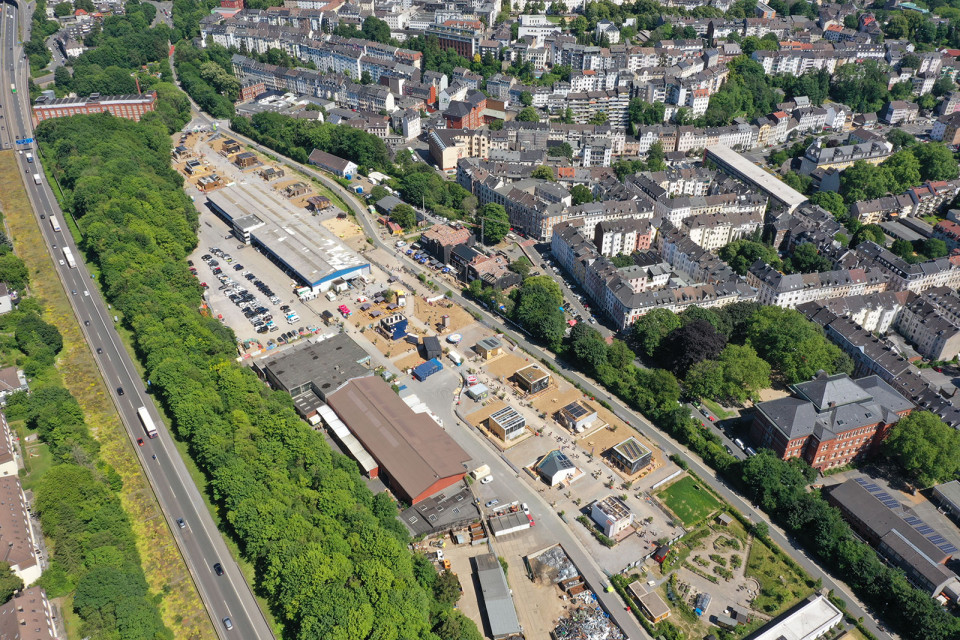
The ten contests, that competition was structured around,wereArchitecture (1); Engineering & Construction (2); Energy Performance (3); Affordability & Viability (4); Communication, Education & Social Awareness (5); Sustainability (6); Comfort (7); House Functioning (8); Urban Mobility (9); and Innovation (10). In Total, there were four different ways for the teams to earn points: jury evaluation, task completion, tests and monitored performance6. Besides that, there was 10 Out of Competition Awards7, for the teams with outstanding achievements and specific solutions for different topics of sustainable building and living.
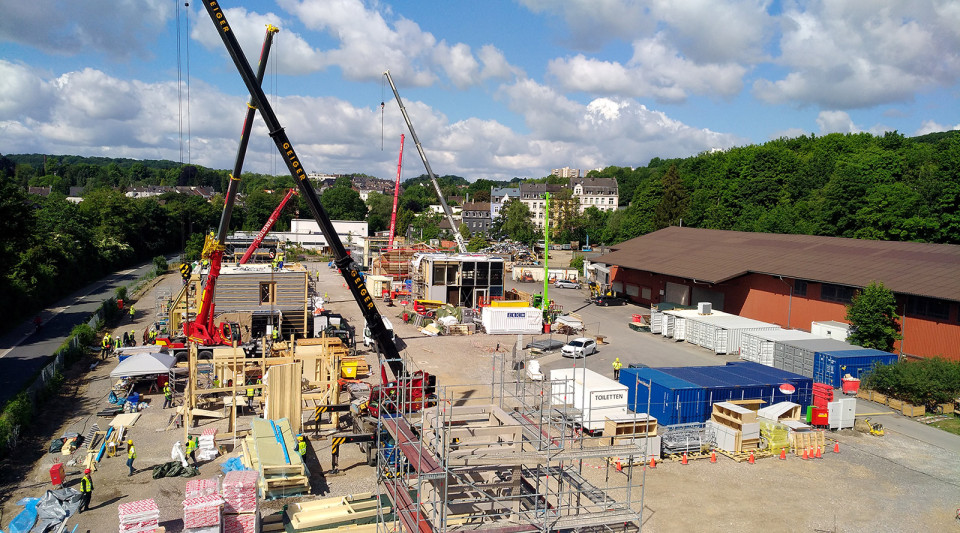
During 36 days on the Solar Campus, the teams built, operated, tested, measured, presented their house demonstration units, and also explained their overall design approach8 to the jury, as well as to the public visitors, which were over 115,000 only in 12 days open to public. After the construction and assembly, which lasted only two weeks and required an extraordinarily intense and high concentration, the teams opened the doors of their units to all visitors with extremely high motivation.
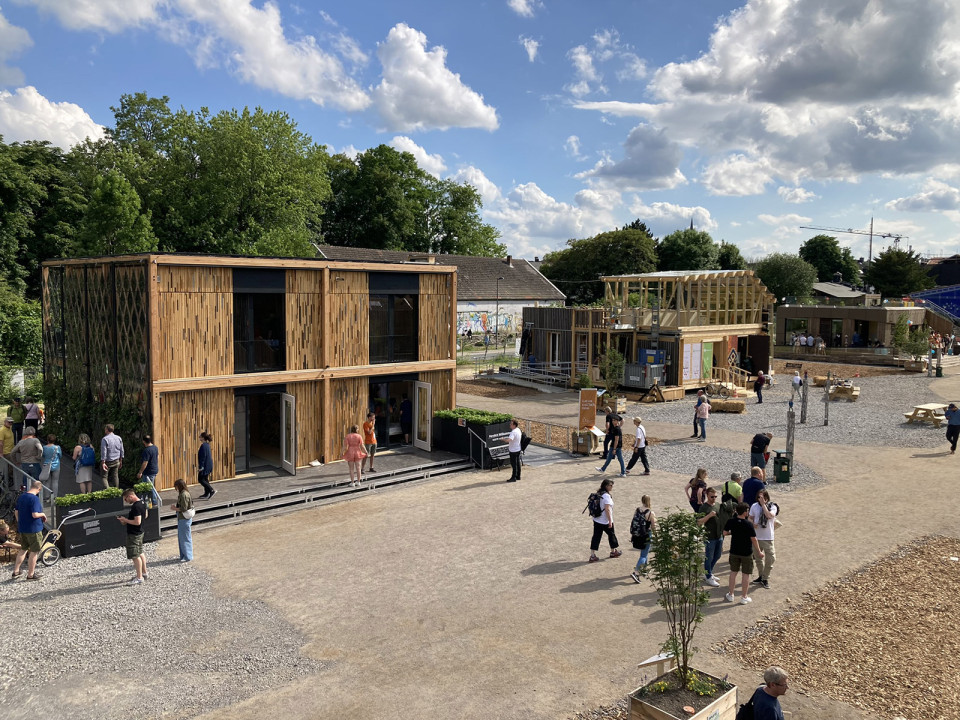
Winners
By the end of the event, the winner with an overall highest score was The Team RoofKIT from Karlsruhe Institute of Technology, Germany. The second place was taken by the Team VIRTUe from Eindhoven University of Technology, Netherland; and the third place was shared by The Team SUM from Delft University of Technology, Netherland and the Team AuRA Grenoble National School of Architecture, France9. Due to the nature of the competition, it was necessary to make a ranking. But it must be said that the members of the jury had been challenged as much as the teams in this competition, for the scores were very close and the rivalry was very high. There were moments when the jury members had to meet over and over again from time to time to discuss the decimal points in the face of the high performances of the teams that were so close to one another. In fact, this was an indication that all teams could take first place on other platforms many times. Therefore, although the winner of this competition was a few teams in the paper, all the participants declared the first place in their respective lanes.
Actually, one comment from Prof.Dr. Karsten Voss, who was the on the board of main director of SDE21/22 explained the performance of the teams very well: “Almost all buildings achieved a positive energy balance during the competition period, i.e. they usually generated significantly more electricity than they needed. In connection with battery storage and automation technology, the teams used on average half of the solar power generated in the house itself. That is significantly more than is usual today”.
If you haven't had the opportunity to visit the Solar Campus, don't worry! Virtual building tours via 3D scans are possible on the competition website10. Moreover, all data and documentation including previous editions of Solar Decathlon can be reached from a knowledge platform11. This online database is accessible in English to scientists, organisers, teams, and enthusiasts for free of charge.
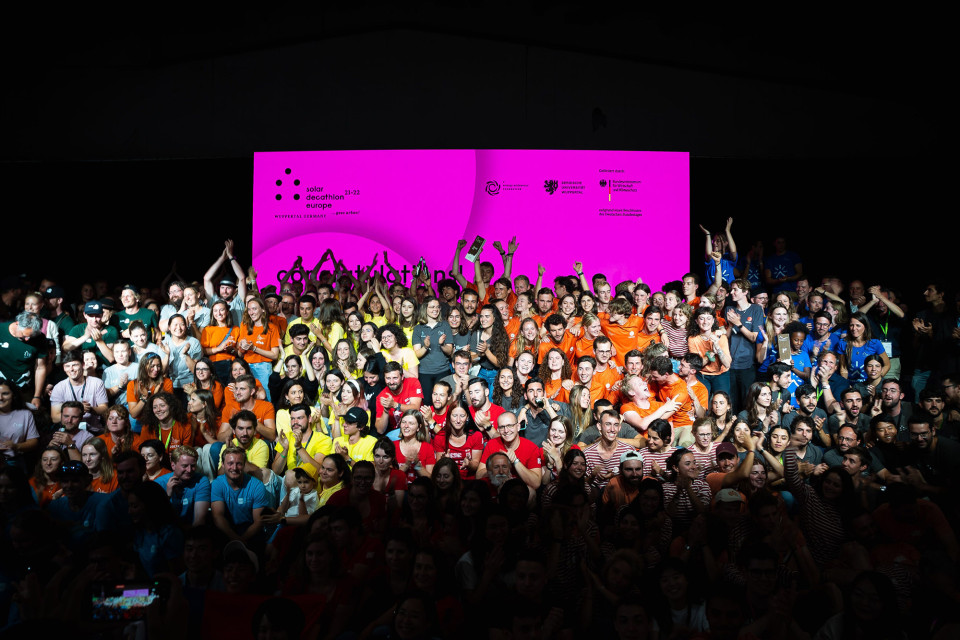
What is next?
Eight of the units from SDE21/22 will remain in the Living Lab North Rhine-Westphalia, which is the central research and educational institution managed by Dr-Ing Katharina Simon, aiming to promote research and education in the field of sustainable and climate-neutral building12. It is indeed an exciting step forward to discover more about urban living in a climate-friendly way. For the next event to be held in Europe, be sure to check out the upcoming international Solar Decathlon Europe 2025 (SDE25) city call!13. And of course, you can follow the teams' websites to keep track of their possible future successes8.
Impressions
One of the most impressive things during the competition was that, despite the high competition, the teams always supported each other with a highly integrated team spirit without compromising their chivalry. The teams demonstrated a high level of solidarity by generously sharing all their resources in terms of workforce, materials and knowledge, which was really worth to see! For example, teams that completed some tasks earlier helped other teams to finish the work in time.
All the teams expressed their pleasure at every opportunity to take part in SDE21/22, especially considering the experience they gained on the Solar Campus. Almost every team member said it was a once-in-a-lifetime experience in terms of hands-on experiences, teamwork, conflict management, and problem solving. Most importantly, they were grateful for understanding how important it is to share and support each other in order to achieve the ultimate goal of sustainable living, despite their different backgrounds and solutions.
SDE21/22 was unique for showing thata sustainable and climate-friendly city is only possible if we dream and work together. Although the teams represented a wide variety in design, engineering, technology and construction, they met on the common ground of sustainable urban living by minimizing gas and oil, through massive energy savings and the use of solar energy.
From the point of city life and residential use, as well as a socio-economic integration, all the units, with their creative space solutions and layouts, proved that more attractive and affordable ways of urban living by implementation of new ways of shared spaces is possible.
Overall, this experience tells us how important our cultures and local resources are to our common future; but it also reminded us how necessary it is to communicate, share and support each other and work together beyond our borders to achieve sustainability on a global scale.
References
1 IEA (2021), Tracking Buildings 2021, IEA, Paris https://www.iea.org/reports/tracking-buildings-2021 [accessed on: 29.8. 2022]
2 U.S. Department of Energy Solar Decathlon About Solar Decathlon, https://www.solardecathlon.gov/about.html [accessed on: 29.8. 2022]
3 Solar Decathlon Europe 21/22, https://sde21.eu/ [accessed on: 29.8. 2022]
4 SDE21/22 Urban Situations, https://sde21.eu/competition [accessed on: 29.8. 2022]
5 SDE Energy Endeavour Foundation, https://solardecathlon.eu/category/eef/ [accessed on: 29.8. 2022]
6 SDE21/22 10 Contest of https://sde21.eu/competition/10-contests [accessed on: 29.8. 2022]
7 SDE21/22 Out of Competition Awards, https://sde21.eu/event/ooc-awards [accessed on: 29.8. 2022]
8 SDE21/22 Teams and Projects, https://sde21.eu/competition/teams-projects [accessed on: 29.8. 2022]
9 SDE21/22 Final Results, https://sde21.eu/results [accessed on: 29.8. 2022]
10 SDE21/22 Virtual Tour, https://sde21.eu/de/digital-campus [accessed on: 29.8. 2022]
11 Building Energy Competition & Living Lab Knowledge Platform, https://building-competition.org/ [accessed on: 23.8. 2022]
12 Living Lab North Rhine-Westphalia, https://sde21.eu/living-lab-nrw [accessed on: 29.8. 2022]
13 Solar Decathlon Europe 2025 – Call for Cities, https://solardecathlon.eu/sde25-call-for-cities/ [accessed on: 26.8. 2022]
 01.09.2022
01.09.2022



